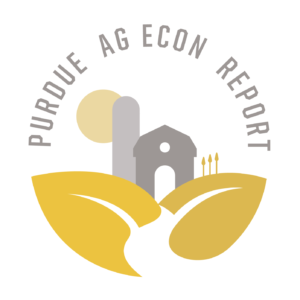Cash Flow Problems and Resource Intermingling: Do They Affect Small Business Recovery and Resilience in the Wake of a Natural Disaster?
October 7, 2020
PAER-2020-11
Authors: Renee Wiatt, Family Business Management Specialist; Yoon Lee, Professor, Utah State University; Maria Marshall, Jim and Lois Ackerman Endowed Professor in Agricultural Economics, Director of Purdue Institute for Family Business; and Virginia S. Zuiker, Associate Professor, University of Minnesota
In small and family businesses, the family system and the business system often overlap and share resources, such as time and money. When there is a business or family disruption, it would seem logical and obvious to look to the other system for resources, such as money. Financial intermingling can expose the family or the business to vulnerabilities. Disruptions such as a natural disaster or a recession would pose greater threats to businesses who were already experiencing cash flow problems. We examined cash flow problems and financial intermingling between family and business following a natural disaster. The goal of this study was to determine what effects, if any, cash flow problems and financial intermingling have on business recovery and resilience following a natural disaster.
We surveyed business owners who had an operational business in 2004 in the lower 10 counties of Mississippi to examine how resilience was influenced by a number of important variables including pre-Katrina cash flow, financial intermingling of family and business, among other business and owner characteristics. The businesses in this survey endured Hurricane Katrina and the effects of that disaster were measured. In order to measure recovery, operational status was observed for each business. For this study, businesses were classified as open if they were currently operating with the same owner or if the business reopened after Katrina, even though it was not currently operating. Businesses were classified as closed if the business was closed by Hurricane Katrina. Resilience was measured by comparing the business owner’s perception of business’ success before and after Hurricane Katrina. For open businesses, resilience is classified into three categories: survived (the business is less successful post-Katrina), recovered (the business has the same level of perceived success pre- and post-Katrina), or resilient (higher levels of success post-Katrina).
Our study found that recovery and resilience are affected in different ways by cash flow problems and financial intermingling of the business and the household. Cash flow problems and financial intermingling did not affect short-term business survival following Katrina. The largest factor that affected short-term recovery following Hurricane Katrina was the level of storm damage. Businesses with major damage were 10% less likely to continue operation following the hurricane. However, cash flow problems and financial intermingling had a large effect on long-term resilience.
Of those businesses that survived Katrina, only 16% had cash flow problems before the disaster. After Katrina, however, 82% of survived businesses, 57% of recovered businesses, and 68% of resilient businesses had cash flow problems. Businesses with cash flow problems following Hurricane Katrina were 6% more likely to have less success following Katrina, 3% less likely to have the same amount of success pre- and post-Katrina, and 2% less likely to be better off following the storm.
There was only a 1% difference between businesses that did and did not survive Katrina in terms of financial intermingling, with 88% of survived businesses participating and 89% of demised businesses participating. Businesses that intermingled household and business finances to fund the business were 11% more likely to have less success following Katrina, 7% less likely to have the same amount of success pre- and post-Katrina, and 4% less likely to be better off after the hurricane.
Disasters and disruptions will continue to occur and affect small and family businesses. The flow of resources from the family to the business and vice versa in such operations will undoubtedly continue. Even during the recent COVID-19 pandemic, most small and family businesses probably faced the dilemma of taking resources from the family to fund the business, or vice versa. However, our research showed that financial intermingling lessened the likelihood of long-term business resilience. It is important for these small and family businesses to understand how cash flow issues and financial intermingling can affect recovery, specifically long-term resilience.
Related Report: https://doi.org/10.1007/s10834-020-09710-y
